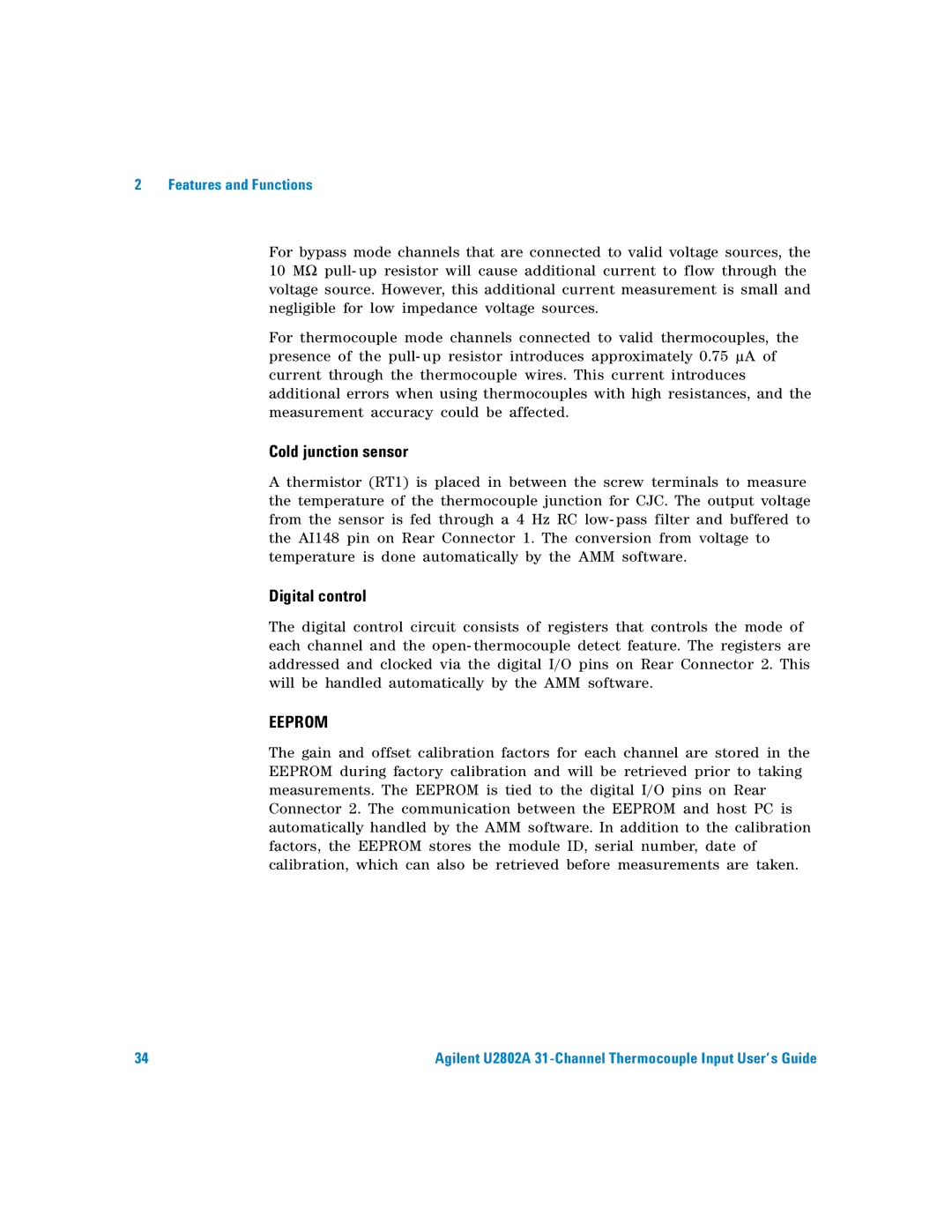2 Features and Functions
For bypass mode channels that are connected to valid voltage sources, the 10 MΩ pull- up resistor will cause additional current to flow through the voltage source. However, this additional current measurement is small and negligible for low impedance voltage sources.
For thermocouple mode channels connected to valid thermocouples, the presence of the pull- up resistor introduces approximately 0.75 µA of current through the thermocouple wires. This current introduces additional errors when using thermocouples with high resistances, and the measurement accuracy could be affected.
Cold junction sensor
A thermistor (RT1) is placed in between the screw terminals to measure the temperature of the thermocouple junction for CJC. The output voltage from the sensor is fed through a 4 Hz RC low- pass filter and buffered to the AI148 pin on Rear Connector 1. The conversion from voltage to temperature is done automatically by the AMM software.
Digital control
The digital control circuit consists of registers that controls the mode of each channel and the open- thermocouple detect feature. The registers are addressed and clocked via the digital I/O pins on Rear Connector 2. This will be handled automatically by the AMM software.
EEPROM
The gain and offset calibration factors for each channel are stored in the EEPROM during factory calibration and will be retrieved prior to taking measurements. The EEPROM is tied to the digital I/O pins on Rear Connector 2. The communication between the EEPROM and host PC is automatically handled by the AMM software. In addition to the calibration factors, the EEPROM stores the module ID, serial number, date of calibration, which can also be retrieved before measurements are taken.
34 | Agilent U2802A |
